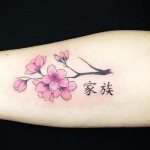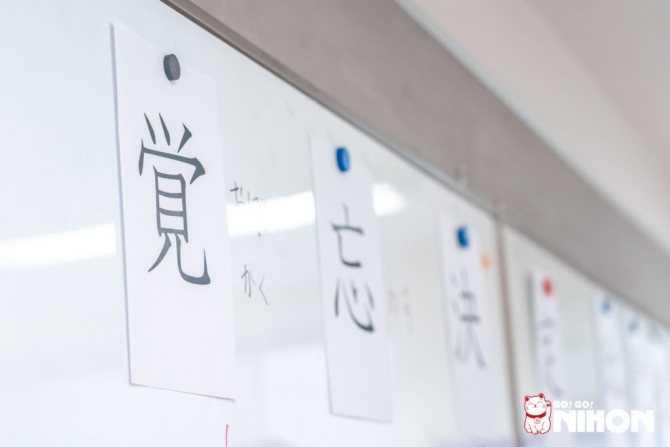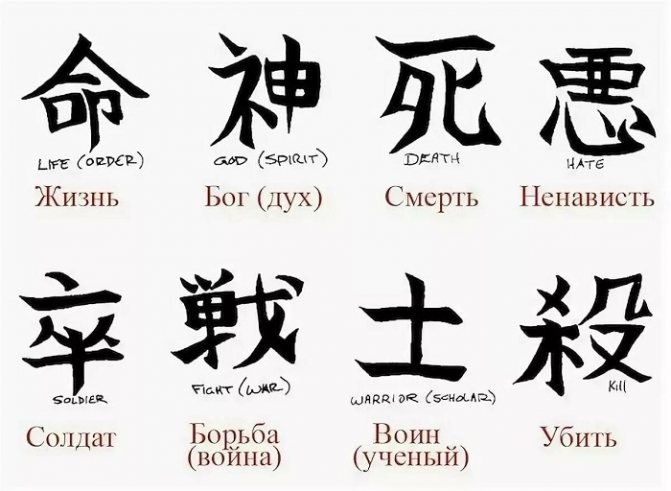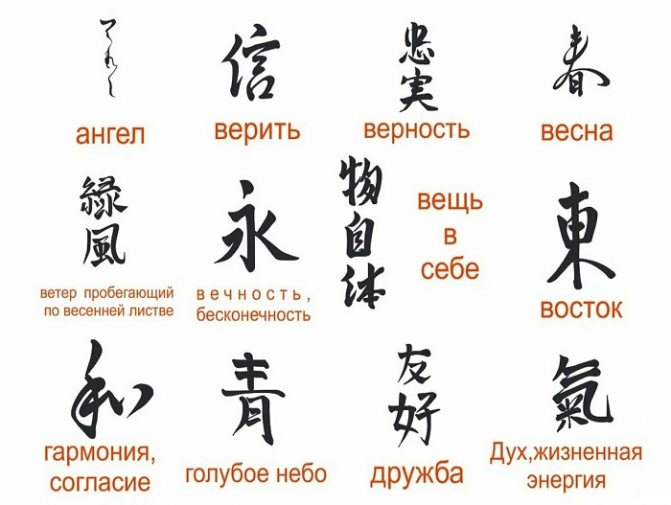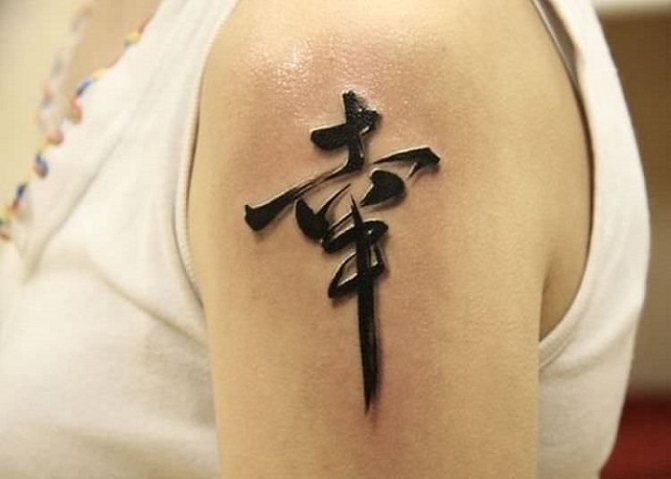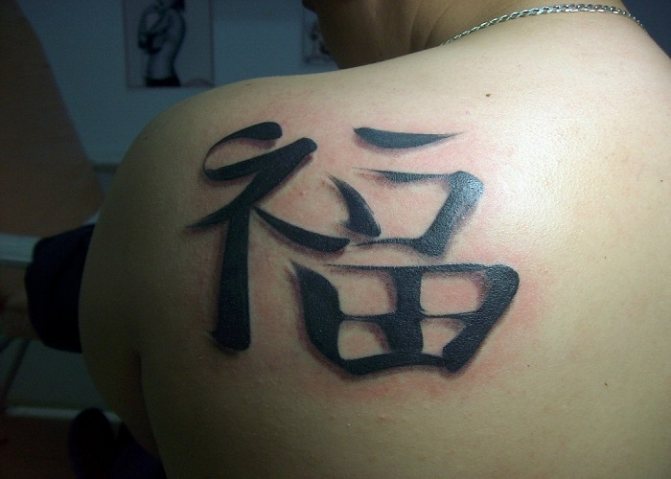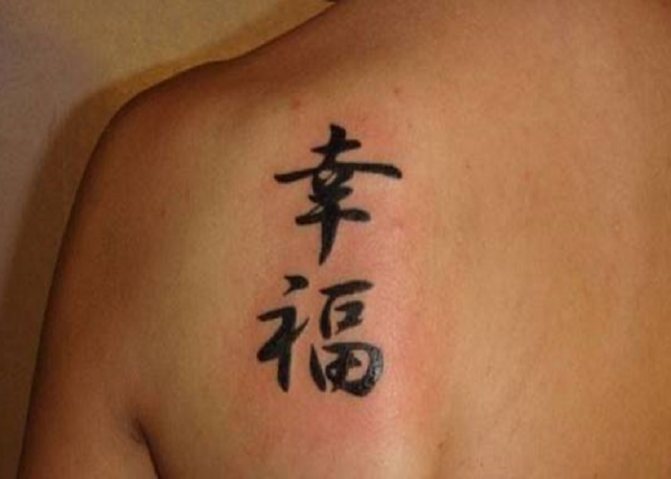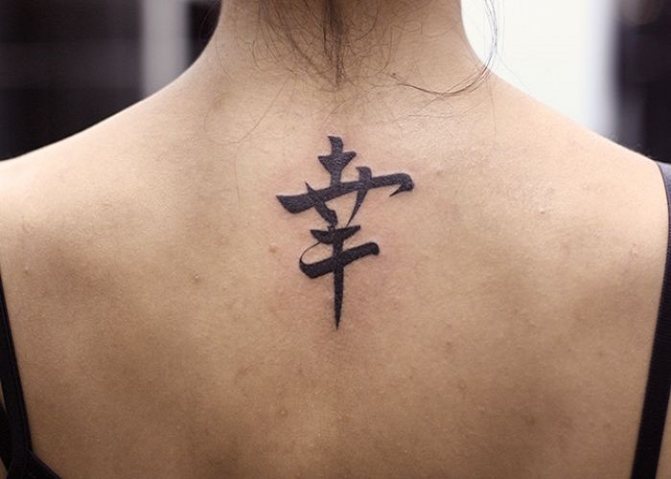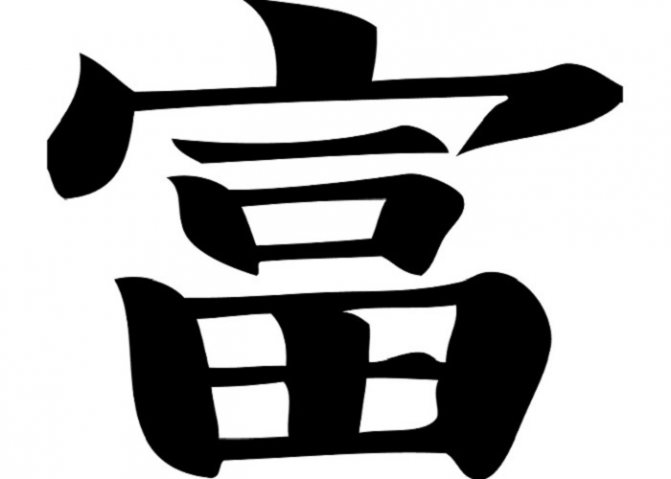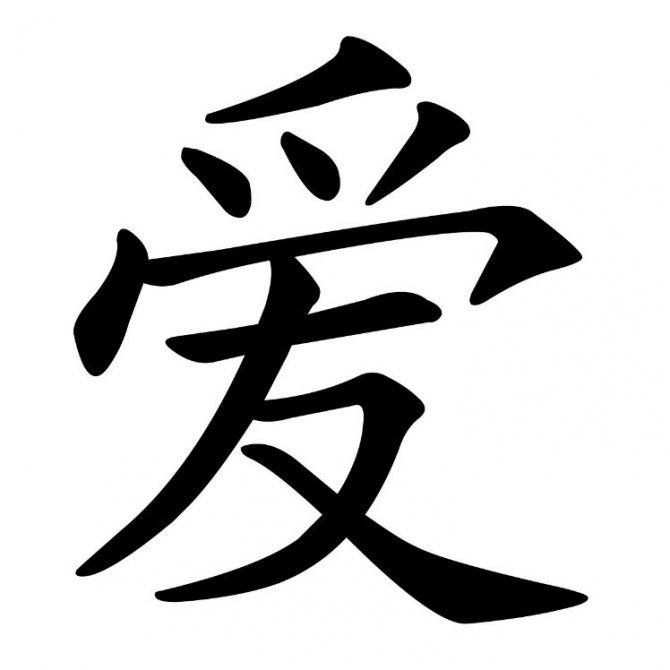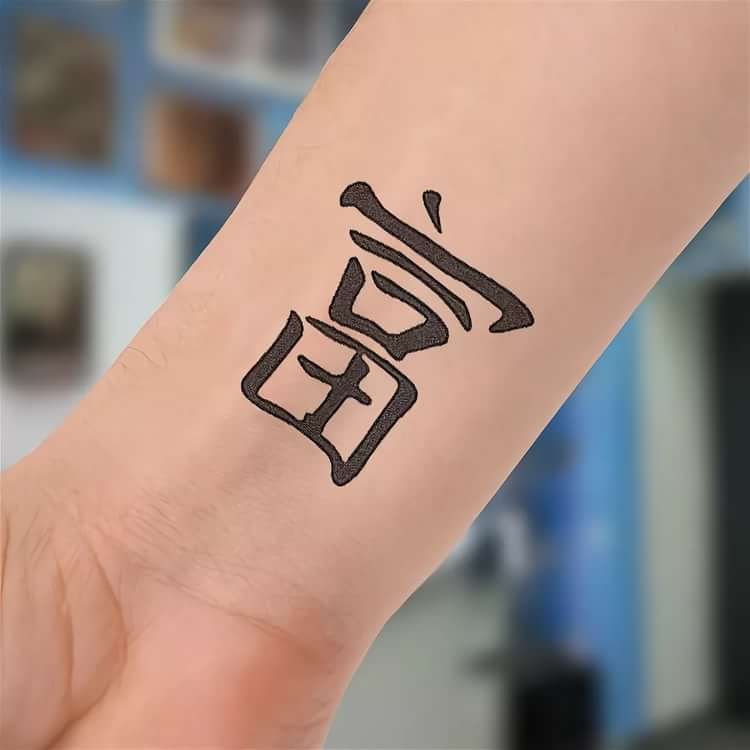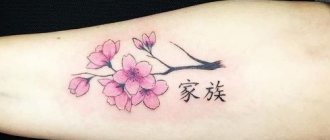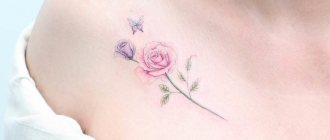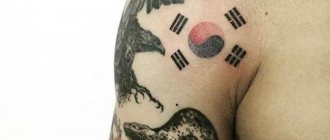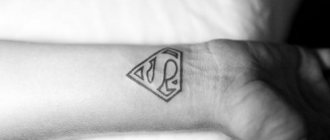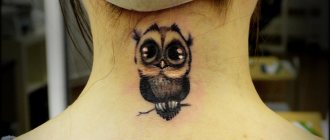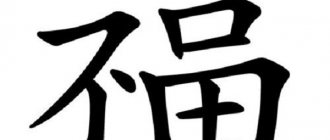Sketches with Japanese characters have long attracted tattoo lovers. These oriental symbols are popular all over the world for several reasons.
First, each character carries a special meaning. People believe that printed hieroglyphs can bring them good luck and protect them from misfortune. Secondly, it is aesthetically beautiful. After all, calligraphy is a trend in art. Thirdly, the mysterious inscriptions in foreign languages often attract the attention of people around.
If you have always liked such tattoos but did not understand what they mean, then we can help you! In our article we will tell about the most common tattoos in Japanese with a translation into Russian and show examples of tattoos on different parts of the body.
What is important to remember before to score as a tattoo of Japanese characters?
First, not to become the hero of one of the ridiculous stories, it is worth choosing well-known characters, the meaning of which is easy to check or to seek help in drawing up a sketch to the professionals who understand the Japanese language.
Secondly, if you believe that every tattoo carries a symbolic meaning, it is worth remembering that a Japanese character may have several contradictory meanings. Therefore, you should be careful to make sure that the sign you choose means only positive things.
Also, you should not forget about the correct spelling. One missing line can drastically change the translation or simply make the symbol meaningless.
Before you make a tattoo with hieroglyphs you must decide in what language you want the inscription. Chinese and Japanese letters are very similar - for the western viewer they even look the same, but in fact they are not.
In addition to characters, the Japanese language has two other alphabets - hiragana and katakana - that are also used for body art. And, to learn how they differ from each other, we advise you to read an article on our website about the 3 Japanese scripts.
How to quickly learn Japanese letters and alphabet
As linguists advise, the most reliable way to learn the alphabet is persistent, purposeful, methodical memorization of symbols combined with constant practice. Special applications for practicing the signs will help you master the writing. There are several programs for your phone and personal computer. Some are available for free, others have limited or no free functionality. Regular repetition is habit-forming, and the speed of recognition increases over time so much that reading becomes a simple task.

Learning Japanese writing
Learning method
The easiest way is mastering with a teacher. Private teaching is widespread. There are courses, recruiting groups of learners. Available private study, in which the teacher is focused on only one student. Both options are practiced both offline and online. Learning with a tutor - the best and most effective option, though it is relatively expensive.
Mastering the alphabet on your own doesn't cost as much. The most effective way is with cards (paper or electronic). This is what is implemented in most applications. You can make the cards yourself - it engages your mechanical memory.
How to make cards:
- cut up 46 small pieces of paper;
- on each one write the kana sign on one side and the reading on the back;
- pull out the cards in random order, identifying from the writing the reading of the sign.
It is recommended to master one alphabet first, then move on to the second.
In order to master the kana better, you should constantly practice the acquired skills by reading the simplest texts in Japanese written in the alphabet. Textbooks, self-study books, and children's books can help.
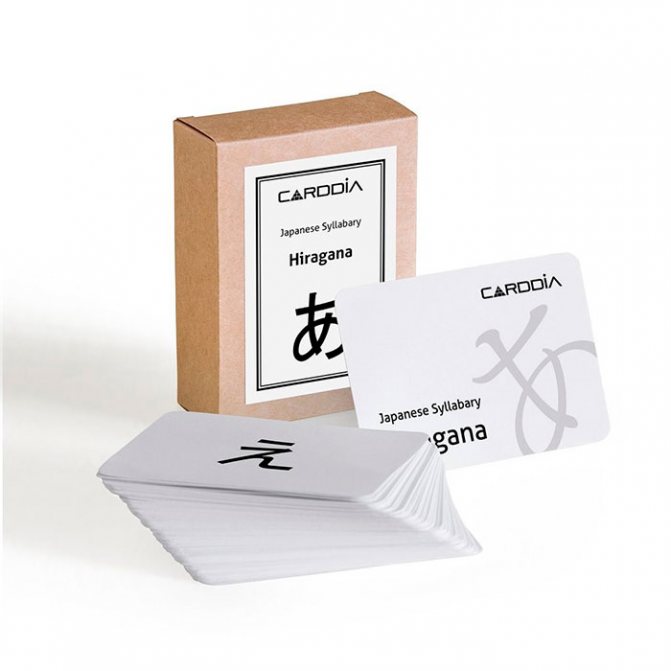

Kana Cards
Japanese Tattoos Hieroglyphics and Their Meaning
Due to the peculiarities of Japanese and Chinese writing, one character can denote a whole word, and several - a sentence. That's why hieroglyphs are liked by both lovers of minimalism and those who like big drawings.
Most often, people type individual characters or words consisting of several symbols. Less often you can find long phrases or words as an element of some image. Below you will find some sketches of popular Japanese characters, tattoos with translation into Russian and the most common places to depict them.
Love
This is one of the most popular and recognizable Japanese characters. People like to use it as a tattoo sketch because it is graceful and carries only positive meaning.


Japanese character for "love"
Freedom
The word "freedom" consists of 2 characters: "I" and "reason":
Luck
There are several characters to write the word "luck" in Japanese:
Japanese character for "luck," "destiny."
Japanese character for "luck," "fortune," "fortune."
Japanese character for "good luck," "enjoyment."
Luck
Other popular characters are those associated with denoting happiness. This word can be written in one or more characters.
Japanese character for "happiness
Japanese word for "happiness
Japanese character for "joy" or "pleasure
Wealth
The theme of wealth is relevant to everyone, so these symbols are also popular.
Japanese character for "wealth
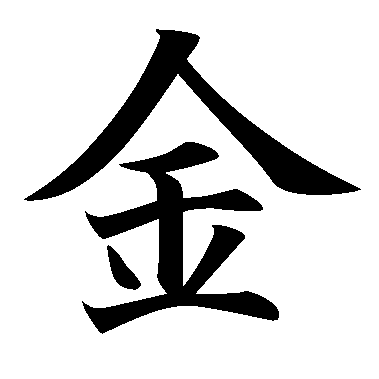

Japanese character for "money
Faith
This word has its own meaning for each person. It can be a belief in oneself, another person or destiny, as well as a belief in God.
Japanese character for "faith"
Japanese character for "god"
Health
Japanese character for "health
Family
In every culture, family is an important thing, so this word can also often be found on the human body as a tattoo.
Japanese characters for "family"
Animals of the Chinese horoscope
Another common choice is the characters for the animals of the Chinese horoscope. People type the name of the animal under whose sign they were born, or simply the animal closest to them in spirit.
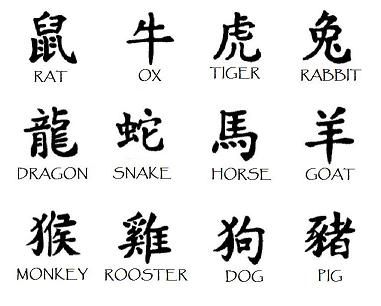

Animals of the Chinese horoscope:
- rat;
- bull;
- tiger;
- rabbit;
- dragon;
- snake;
- horse;
- goat;
- monkey;
- rooster;
- dog;
- pig.
Other ideas for tattoos with Japanese characters
Below we look at a few more popular characters for tattoos, the Russian translation for which you can find below the photos.
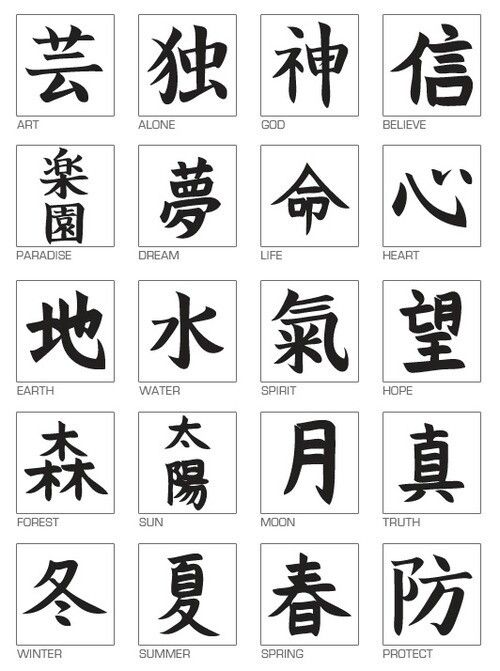

- art;
- solitude;
- god;
- faith;
- paradise;
- dream;
- life;
- heart;
- earth;
- water;
- soul;
- hope;
- forest;
- sun;
- moon;
- truth;
- winter;
- summer;
- spring;
- defense.
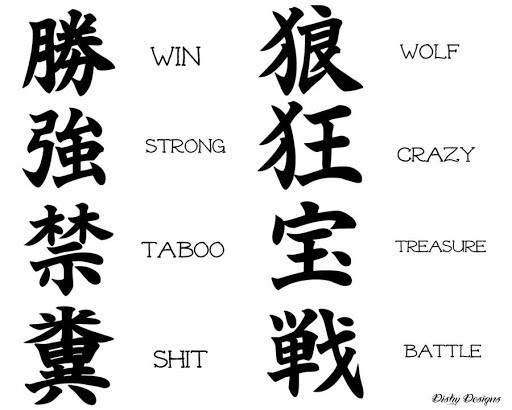

- victory;
- wolf;
- strength;
- madness;
- prohibition;
- treasure;
- blin!
- battle.
Get the basics with Go! Go! Nihon
Such a complex system of characters can be a little intimidating, especially for those just starting to learn Japanese. But don't worry, there are plenty of great resources for learning language alphabets and characters, from books to phone apps to games!
If you're learning Japanese at home, we have some great articles that can help you: *Best apps for learning Japanese *Self-awareness? Use this time to learn Japanese!
Another great way to learn the basics of Japanese is to take our online course for beginners.. We've worked in collaboration with Akamonkai Japanese Language School to offer a comprehensive 12-week course that gives you a solid base of knowledge to develop your language skills. Learn more about the course here.
Feel free to contact us for more information!
Japanese Characters: Tattoos for Women and Men
Japanese writing is equally suitable for both men and women. However, as a rule, girls choose sketches with single characters or small phrases with beautiful meaning. Usually they are inscriptions that are associated with something kind and positive. They like fine lines and sometimes add elegant elements to their sketch: sakura blossoms or sea waves.
Men, on the other hand, are more inclined to choose either voluminous drawings that include hieroglyphs or small inscriptions that emphasize their strong character. Unlike women, guys can type hieroglyphics even with a slightly depressing meaning. In the case of simple phrases, men prefer to do tattoos in bold lines that look like brush strokes.
Below we show examples of Japanese characters tattoos - photos of male and female tattoos - and you will see that they are not tied to gender. The main thing is to choose an image that suits your state of mind.
History
Used since the end of the 4th millennium BC in Egypt. Totally up to five thousand different Egyptian hieroglyphs are known, but in each era no more than 700-800 were used. A distinction is made among Egyptian hieroglyphs:
- Single-consonant signs. They represent the consonantal sounds of the Egyptian language. There are about 30 of them;
- Two or three consonantal signs for the transmission of morphemes;
- Ideographs - to indicate entire words;
- Determinatives - auxiliary ideographic signs that clarify the meanings of words.
The term hieroglyphs is also applied to signs of other writing systems. Hieroglyphs are usually called the signs of the most ancient (2nd millennium B.C.) and modern Chinese script, signs of the Hittite pictorial script (2nd-1st millennium B.C.) rather than cuneiform.
Neck Tattoo: Japanese Characters
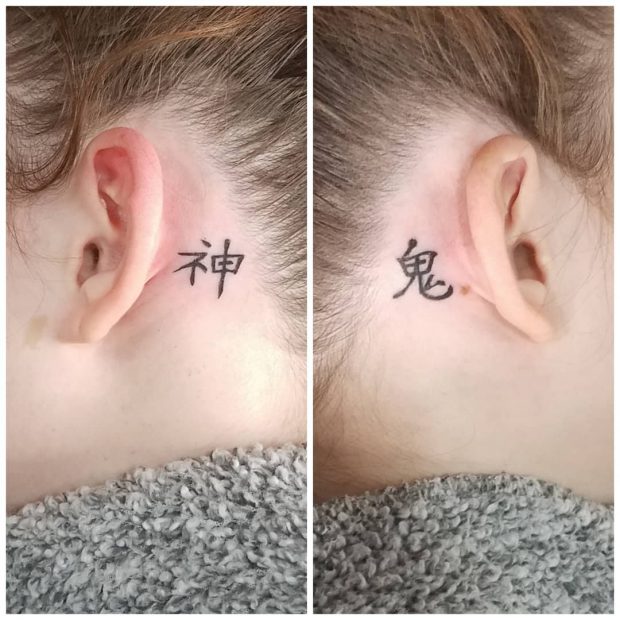

Japanese Characters for "God" and "Devil".
Usually tattoos with hieroglyphs are done in a small size. Therefore, the neck is a place where you can often see these Asian symbols. It is popular with girls because of the elegant look of these miniature neat tattoos on the neck or behind the ear.
As sketches choose single characters with a beautiful meaning or whole small words, complex drawings in this place are not very common.
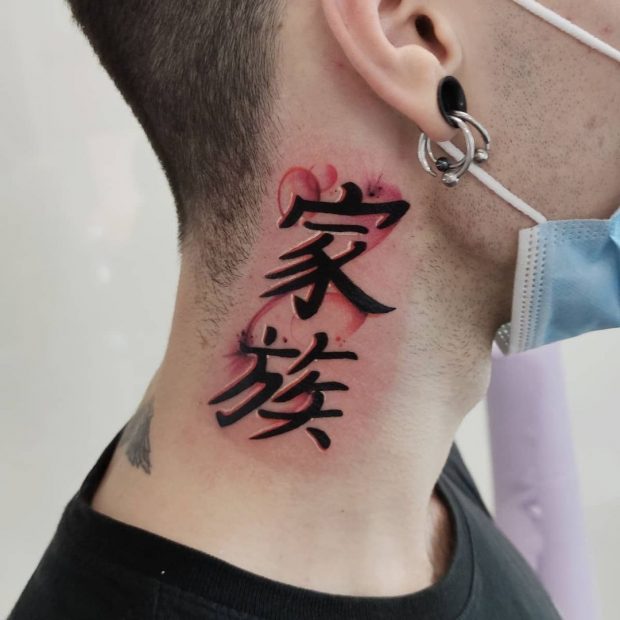

Translation: "family."
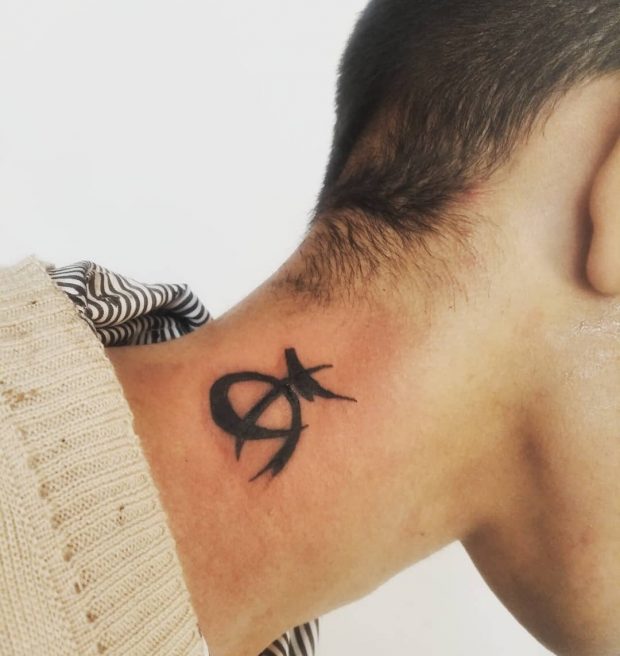

Japanese letter "A" written in hiragana
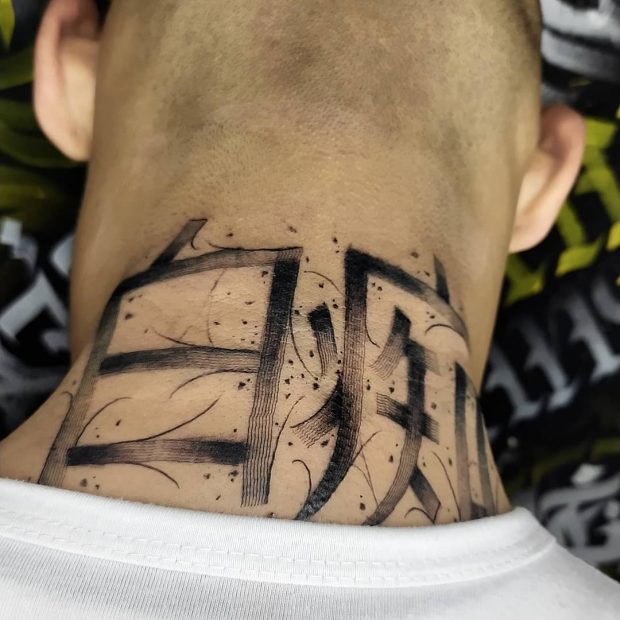

Japanese characters "idiot"
Order of strokes.
From the beginning of the study, pay attention to the correct order and direction of the lines to avoid bad habits. Often students don't see the point in the order of the strokes if the result is the same. But they overlook the fact that there are thousands of characters and they are not always written as carefully as they look in print. The correct order of the strokes helps you recognize the characters even if you write quickly or by hand.
The simplest characters, called radicals, are often used as components of complex characters. Once you learn the radical stroke order and get used to the principle, you'll find that it's not hard to guess the correct order for most kanji.
Most often, the strokes are drawn from the upper left corner to the lower right corner. This means that horizontal lines are usually drawn from left to right and vertical lines from top to bottom. In any case, when in doubt about the order of the strokes, consult a kanji dictionary.
Japanese Characters: Tattoos on the Back
The back is a large area of the body. You can place a whole story with a large image on it, or a simple minimalistic phrase printed on the spine.
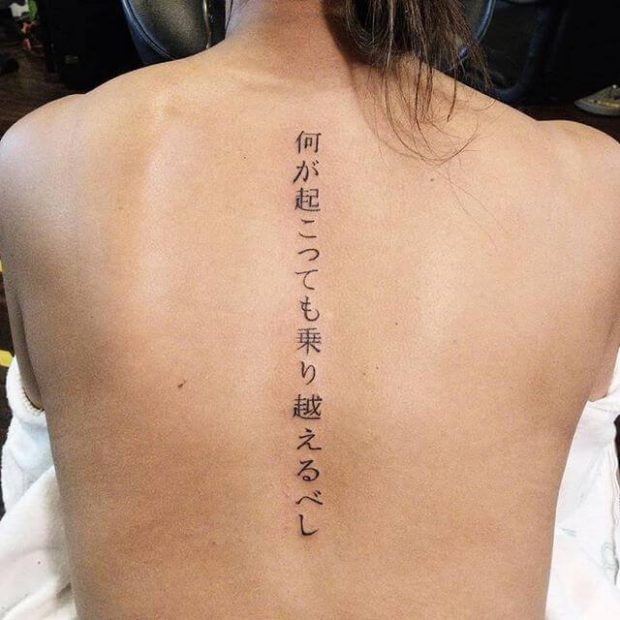

Translation: "no matter what happens, I will overcome everything."
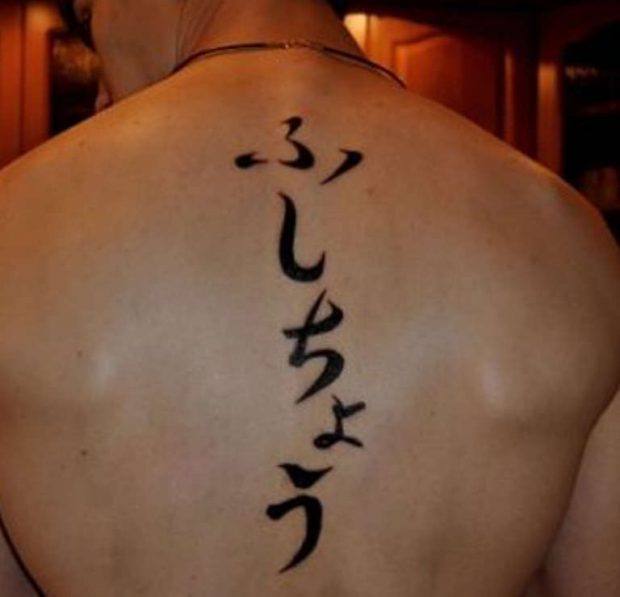

Translation: "phoenix."
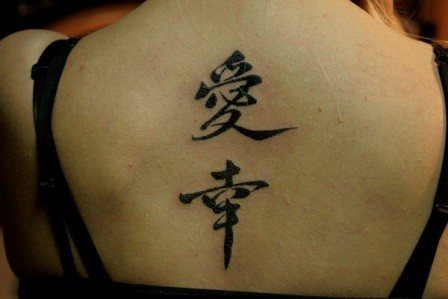

Japanese characters for "love" and "happiness"
Very popular circles symbolizing Zen.
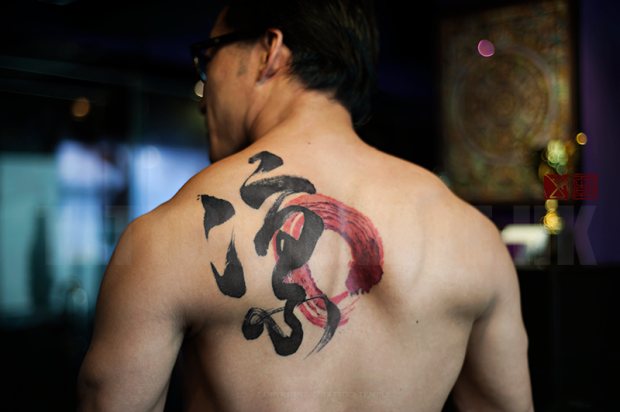

Calligraphic style tattoo
Guys often choose large drawings, complementing them with inscriptions in Japanese. These can be philosophical quotes, life mottos, poems.
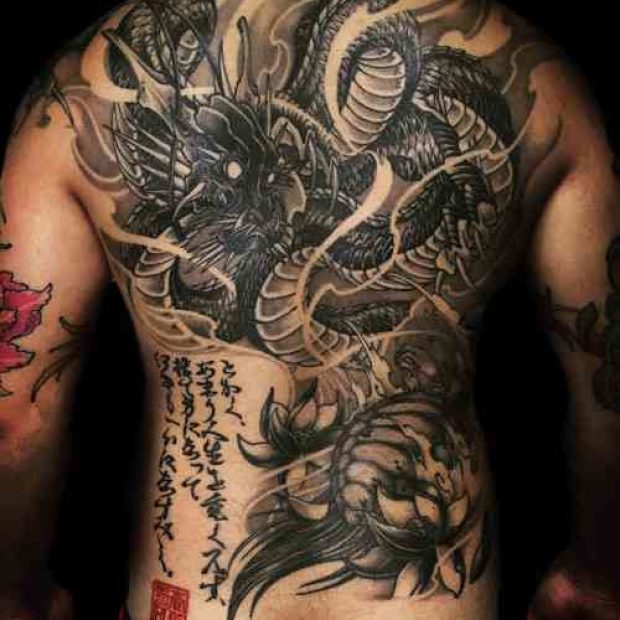

And if you are the kind of person who wants to do a tattoo with the name of a loved one in Japanese, then it will be written in the katakana alphabet:
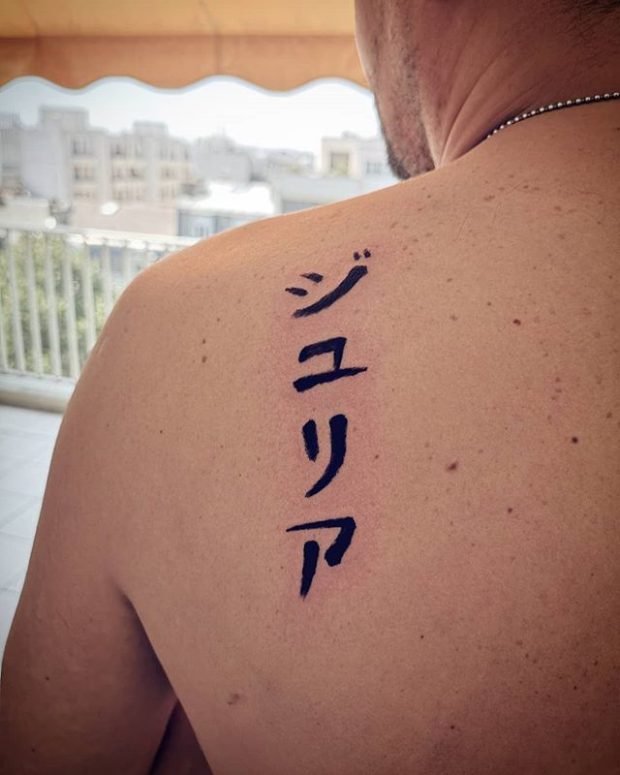

The inscription: "Julia".
Tattoo on the arm: Japanese characters
Another popular trend is to tattoo characters on the hand, Japanese characters look especially good on the wrist and forearm.
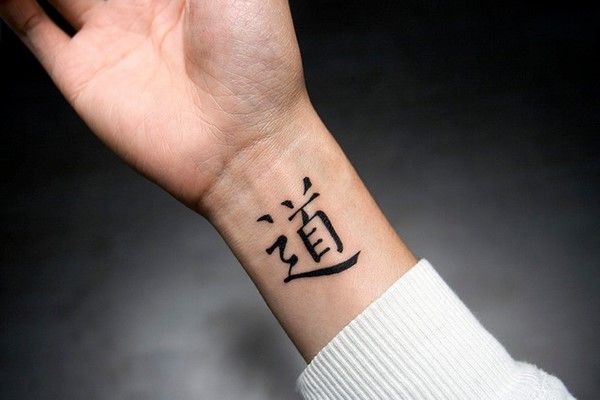

Translation: "path."
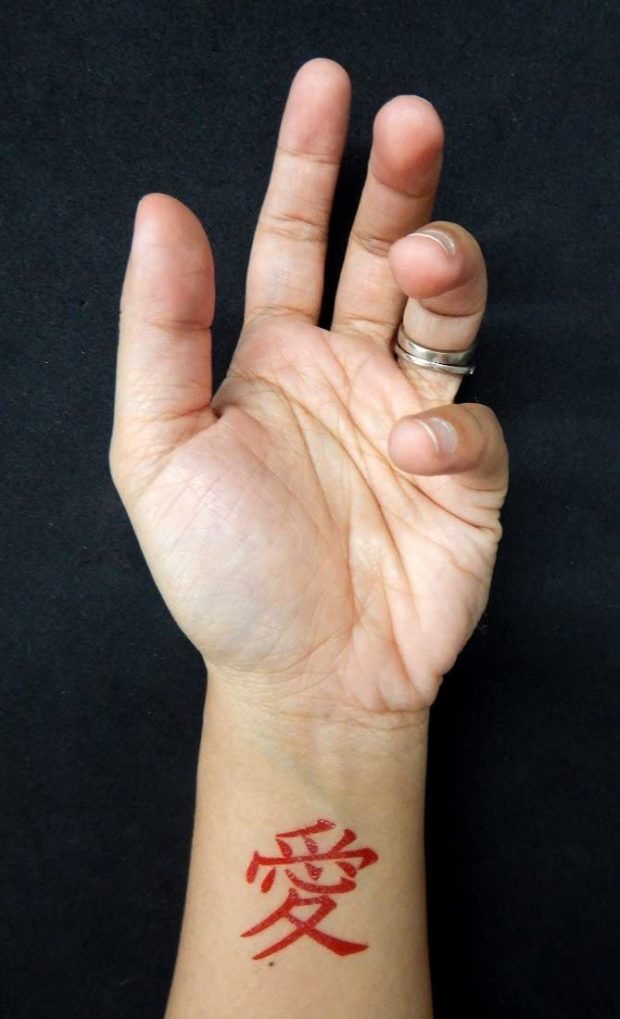

Japanese character for "love" tattoo
Thanks to the multitude of fonts, the same symbol can look completely different. A master can make it look delicate and elegant or even imitate brush strokes, making it a real calligraphic canvas.
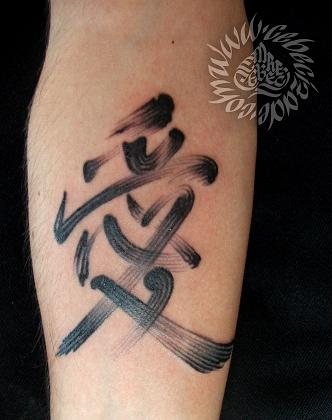

Japanese character for "love
Japanese character for "good luck" tattoo


Japanese character for "freedom" tattoo
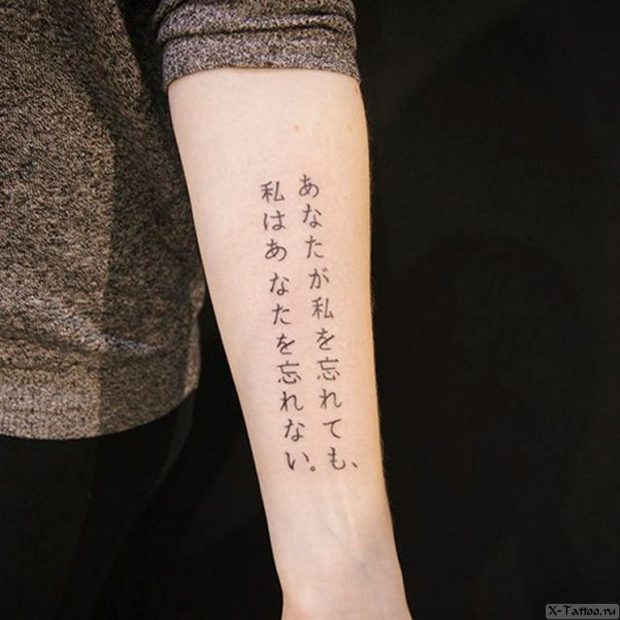

Translation: "even if you forget me, I'll forget you."
In Eastern culture, everything is filled with symbolism. Therefore, those who have decided to decorate their bodies with hieroglyphs, add to the sketches images that encapsulate the philosophical meaning. For example, bamboo is an important element of the Asian world, symbolizing strength and resilience.
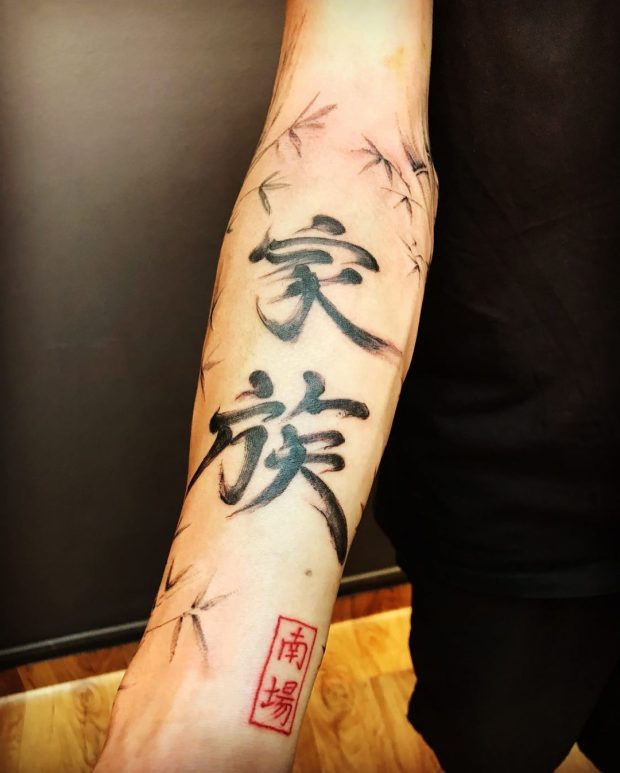

Japanese hieroglyphs "family"
On the very shoulder such tattoos prefer to do men.
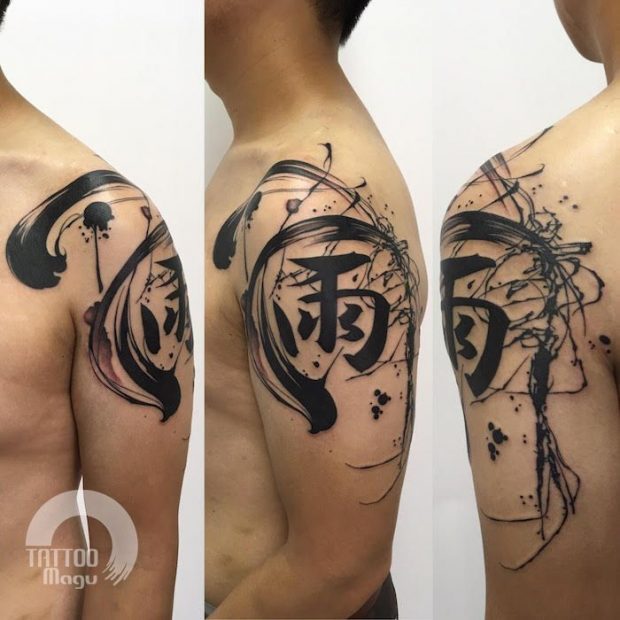

Japanese character for "rain."
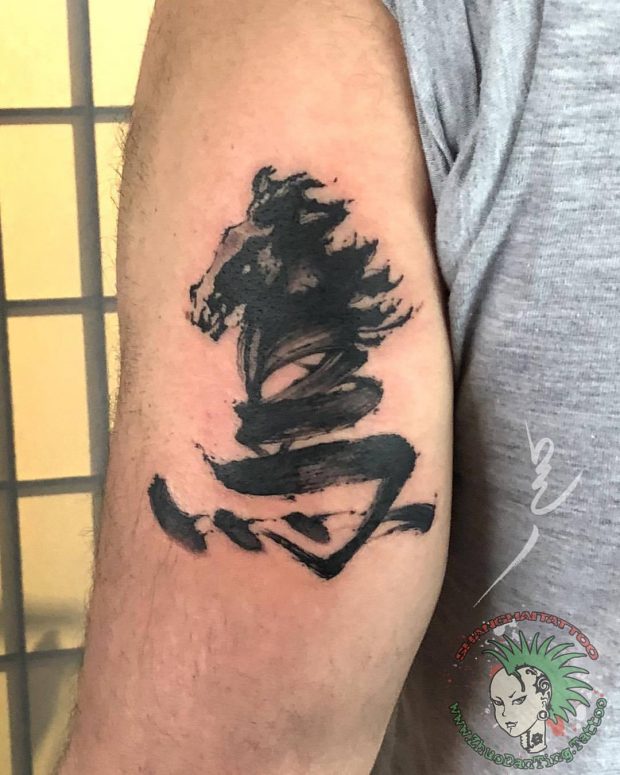

Translation: "horse."
Fans of the Land of the Rising Sun stuffed themselves with tattoos in the traditional Japanese style, touching on cultural motifs. For example, below is a photo of a Japanese daruma toy with the famous image of waves in the background.
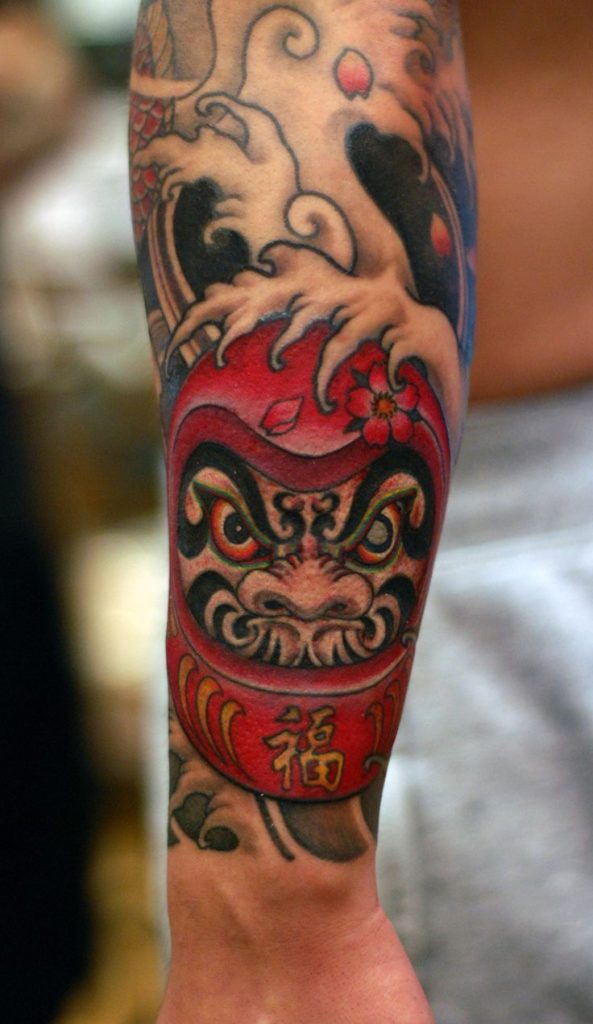

Hieroglyph: "happiness"
Hieroglyphs and hiragana seem incomprehensible? We shouldn't forget about the third Japanese alphabet, katakana! It, too, looks elegant as a tattoo:
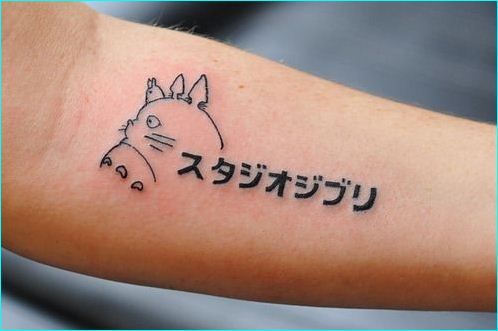

The inscription: "Studio Jibli."
And to learn katakana faster, you can read our article about Japanese alphabets. Or get yourself a tattoo of the full alphabet:
The full katakana alphabet as a tattoo
Katakana alphabet with Russian transcription
Katakana is a syllabic Japanese alphabet, formerly considered a male alphabet. It is now used to record names and borrowed words. In the traditional Japanese school educational system, the study of katakana follows the mastery of hiragana. As a rule, everything falls in one grade of elementary school, the first grade. Some children master the alphabet earlier.
Visually, the characters of katakana are very different from those discussed above - they are sharp, consisting of straight lines. The external difference should not deceive: each symbol of katakana has an analogue in hiragana. Both systems of writing words came from hieroglyphics (hiragana from cursive writing, katakana from parts).
Katakana is needed to write names. It is often used to write the names of plants, animals, and birds. Hieroglyphs for such objects are very rare, so the use of the alphabet simplifies the task of reading and understanding. Sometimes katakana is substituted for kanji or used to create emphasis on a particular word. You can also use katakana to reflect the speaker's accent if the text is representing someone else's speech.
The main difficulty with katakana is the similarity of some characters. A special feature is the presence of a symbol that represents the longitude of the sound. Visually the sign looks like a dash.


Katakana and the Russian transcription
Tattoo on the stomach and chest: Japanese characters
Girls choose for tattoos the collarbones and ribs. Guys, on the other hand, usually do them in the chest area or on the abdomen. On these places you can often find separate characters or inscriptions as parts of a separate image.
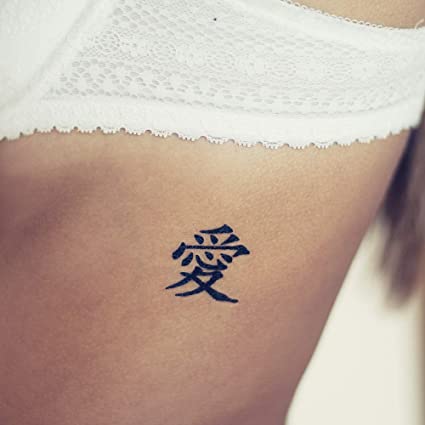

Japanese character for "love
Cherry blossoms - a frequent motif associated with Asian culture. However, few people know that this tree symbolizes the transience of life and rebirth.
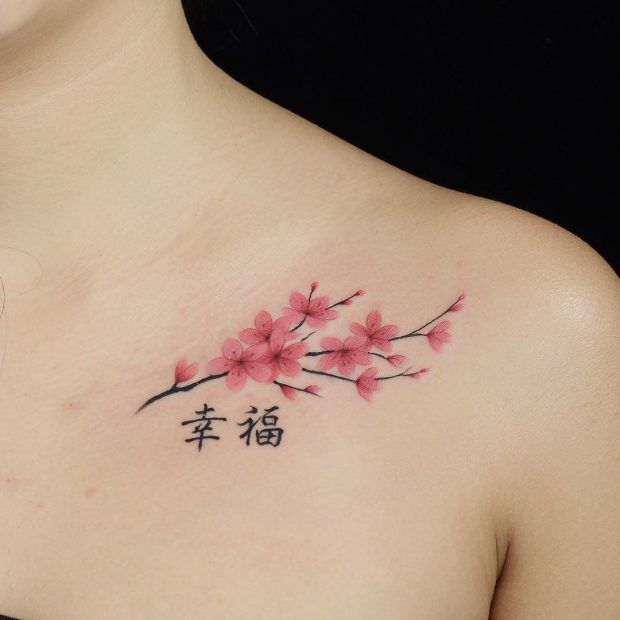

Japanese character for "happiness" tattoo
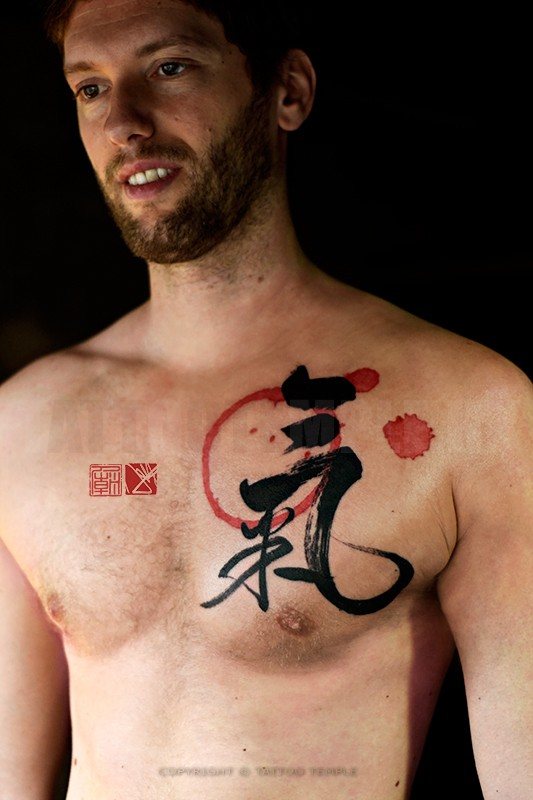

Japanese character for "soul
Italic calligraphy tattoos are a great piece of jewelry, but they are hard to read, which is why many people tend to go for the more familiar options.
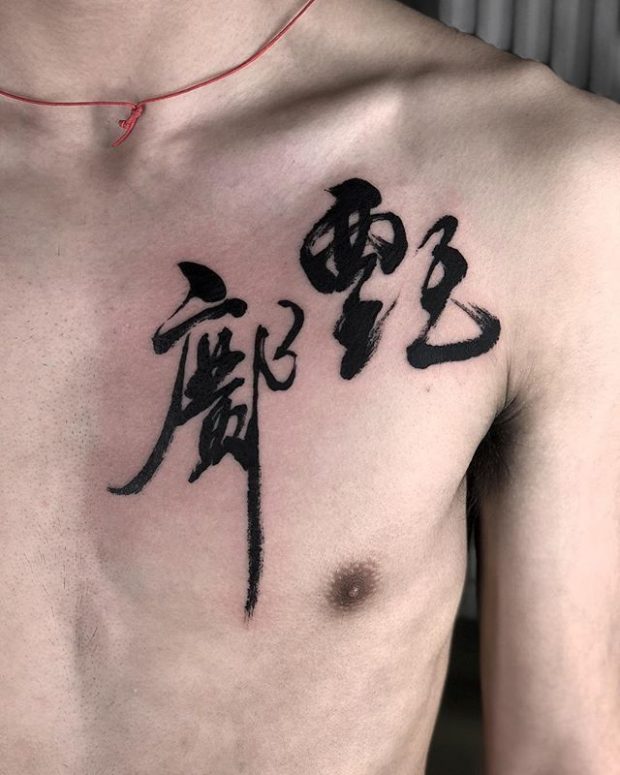

Calligraphy tattoos
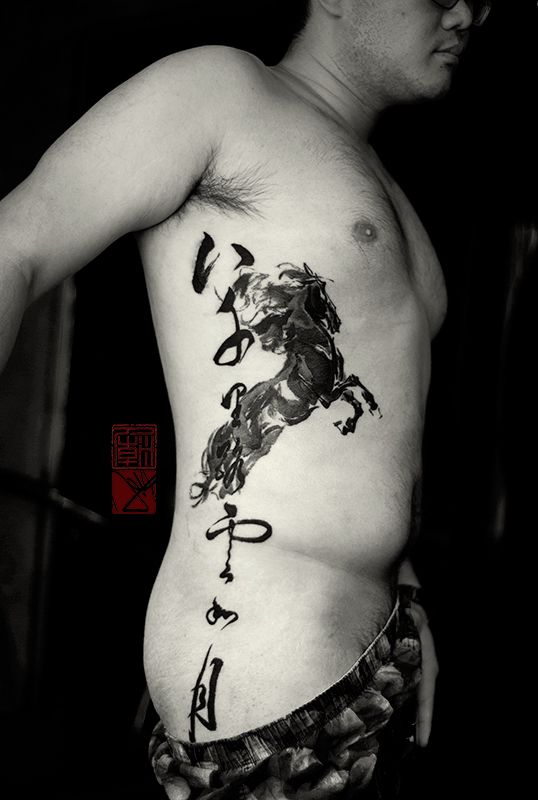

Tattoo on the leg: Japanese characters
Girls are very fond of doing such tattoos on the ankles, just above them or on the feet. On guys, they can often be seen on the calves as an element of a large image.
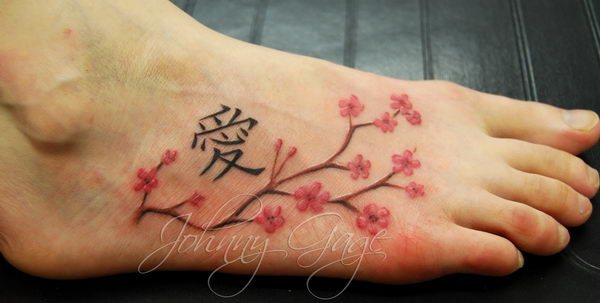

The character for "love."
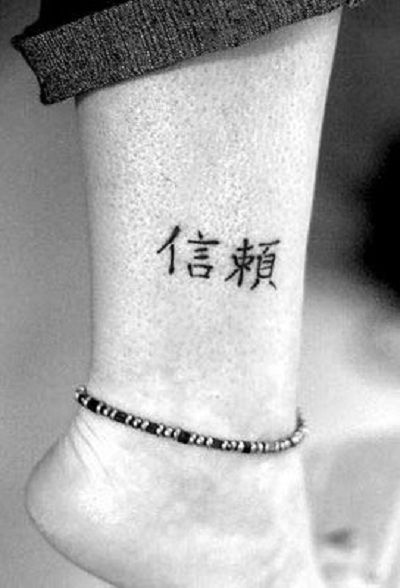

Japanese character for "trust
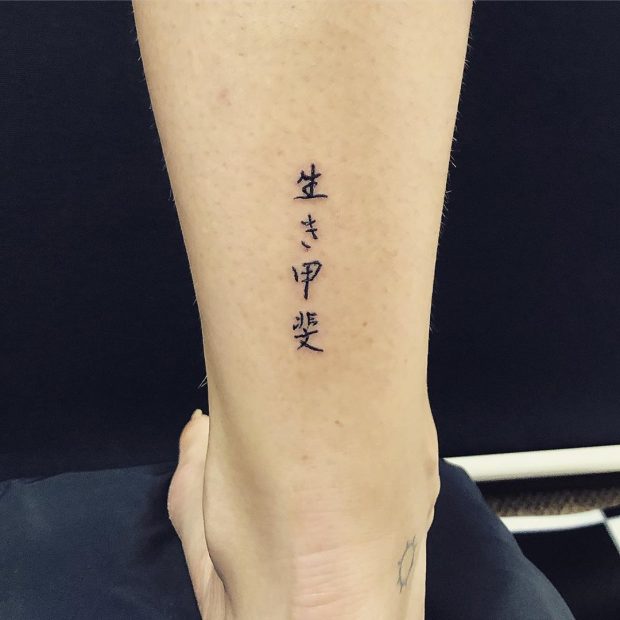

Japanese character for "meaning of life
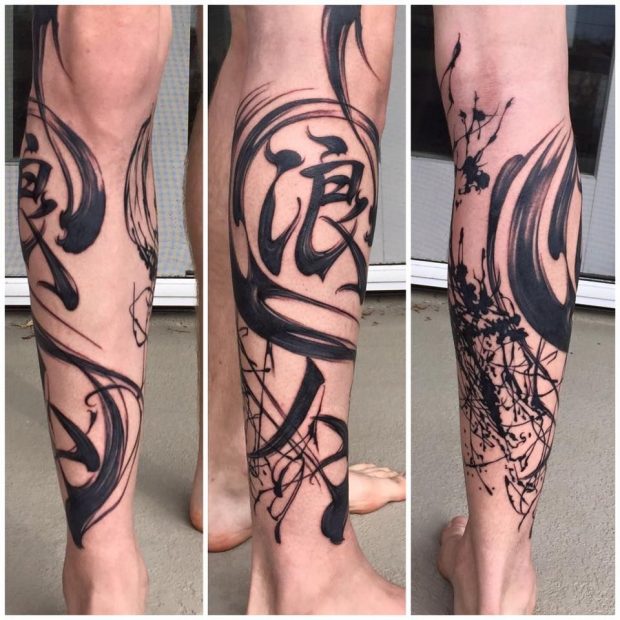

Japanese characters "wave" tattoo
Japanese characters are a beautiful and mysterious body decoration. As with any tattoo, the choice of inscription should be approached carefully. We showed some examples of Japanese characters tattoos and their meaning. As you may have noticed, there are different styles in which these oriental symbols can be inked, from simple printed text to sprawling italic calligraphy.
Would you get a tattoo of Japanese characters? If so, what kind? Write in the comments! 

Tattoo Japanese characters translated into Russian: their meaning and photos. The most popular tattoos with Japanese characters for women and men in our article.
Dictionaries and translators
Dictionaries come in paper and electronic; the latter work offline or online only. A few decades ago there were very few dictionary options, but in recent years the choice has become much wider.
Among the paper ones, the most famous are:
- Big Japanese-Russian Dictionary (two-volume);
- Japanese-Russian Scientific and Technical Dictionary of Hieroglyphics (two volumes);
- Sanseido Japanese-Russian Dictionary.
Of the electronic dictionaries, the audience's favorite are:
- Yarksi;
- WWWJDIC;
- Nihon Moji.
Japanese translators mostly work online. Well-known resources:
- yakusu.ru;
- nihongo.aikidoka.ru;
- warodai.ru.
Earlier, the Casio portable electronic translators were widespread, but in recent years their popularity declined, but the new heights are conquered by the online translator from Google, which can not only translate the typed text, but also recognize characters on paper through the camera.
Which of the dictionaries and translators to use when studying is up to the student. Conventional books are good for accuracy and authenticity. They are easier to memorize the spelling of the symbol, but the interaction takes time. Online dictionaries are more extensive, work automatically, require a minimum of time to find the character, and are regularly updated. The bad news is that most dictionaries require an Internet connection and translations are not always accurate.
